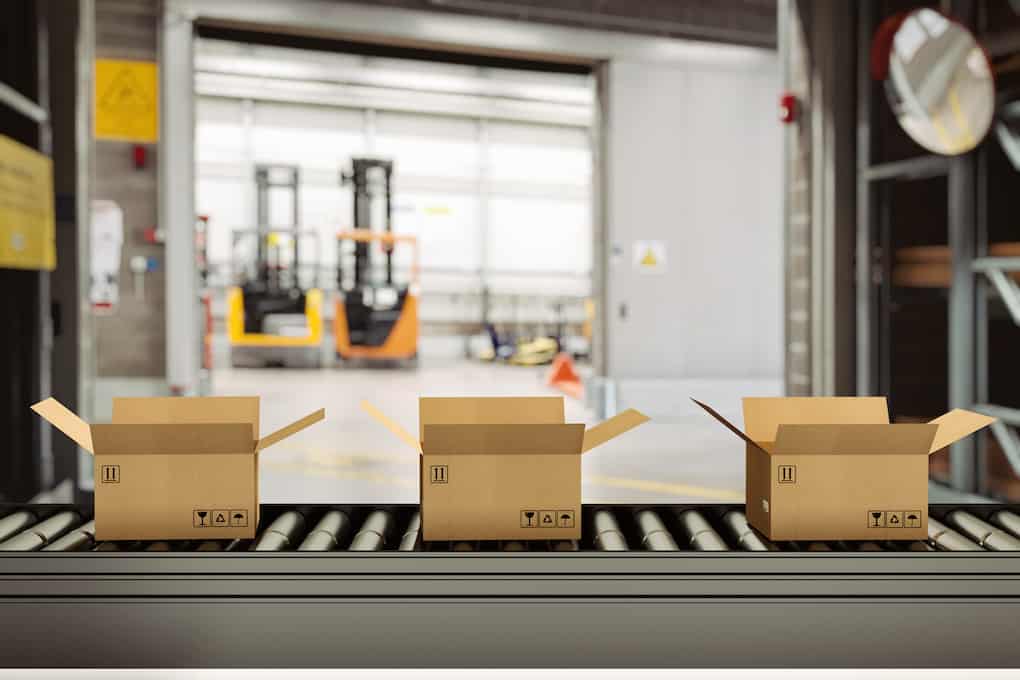When an order comes into your warehouse, your customers expect it to be filled as soon as possible. Delays because of poor practices and inefficient routes don’t sit well with customers.
As industries become more and more digital, the ability to assess your systems and practices gets easier. Best practices and tools have been developed, backed by data and trends. If you want to improve your warehouse’s order fulfillment, then be mindful of these tips on improving your warehouse picking practices.
What Does Picking Mean for a Warehouse?
Warehouse order picking is pretty straightforward: it’s the process in which inventory is pulled for a customer’s order. Order picking refers to both the labor and tools necessary to fill these orders.
However, order picking isn’t as simple as its definition in practice. Huge operational costs are sunk into filling and picking orders every day — to the tune of 55% of a company’s operational costs, on average. If you’re spending that much money on a system, you should expect it to work well.
Warehouse logistics play a significant role in the effectiveness of a company’s order picking capabilities. If you don’t understand how your warehouse operates and what practices work best for you, then order fulfillment can be severely affected. That’s where understanding what order picking means comes into play.
Warehouse picking practices are not a catch-all solution for every kind of business. Warehouses will vary based on size, amount of staff, and the diversity of their inventory. One organizational system might work for one group of employees or a uniform inventory, but not for something more diverse. Order picking will have to change based on what your warehouse needs.
How Can I Improve My Warehouse Picking?
Once you’re ready to improve how you fill your orders, you’ll start to want solutions to the problems you find. Most solutions will fall into two categories: practice optimization or equipment upgrades.
Optimizing your warehouse’s order picking practices will be one of the main ways businesses improve their order fulfillment. Organizational systems, route planning, and other operational tweaks can improve a warehouse’s ability to fulfill an order. Different types of warehouse picking strategies and other best practices exist that all help improve effectiveness.
Equipment plays a large part in improving efficiency, as well. The best staff in the world would still be held back by an automation system that runs slowly or with forklifts that can’t carry the loads being placed onto them. The equipment that your staff uses to carry out their role needs to match the picking methods being assigned to them.
What Are the Four Types of Order Picking?
A warehouse picking strategy has to work for your specific business needs. Not all warehouses work with the same products or have the same kinds of people working inside them. If you want to maximize your efficiency, you have to customize your picking strategy to your warehouse. Here are some examples of warehouse picking strategies that could work for your business:
Zone Picking

Zone picking is when a warehouse is divided into sections containing related SKUs. When a pick order comes through, a worker or automated bin moves through the zones. In each zone, warehouse workers load the containers with products needed for multiple orders at the same time. The container then moves through the zones until everything has been collected for the multiple orders.
This strategy generally works best for large warehouses. That’s because this strategy cuts back on walking time for the workers. That way, they can spend less time walking and more time finding products for the orders coming through the system, in turn, boosting both employee satisfaction and productivity.
Discrete Picking
With discrete picking, a single worker is assigned to a single order, and they pick each line on the order through the whole order. Rather than working within a single zone, the worker assigned to that pick order works across the warehouse to gather everything up.
Small warehouses or warehouses that don’t receive a high volume of orders tend to benefit the most from this strategy. What you lose in time efficiency is made up for by requiring fewer touches or hand-offs to make sure the pick order is filled.
Batch Picking
Batch picking has warehouse managers monitoring orders that come in for popular items. Then, the managers organize those orders by SKU for those items. Pickers close to the area where those SKUs are stored then receive these orders and fill them.
Batch picking works best for warehouses that see predictable types of orders coming in. E-commerce businesses where things are based on seasonal trends can use batch picking to set up their zones. Batch picking also has the benefit of the managers being actively involved in the pick order distribution.
Wave Picking

Wave picking as a warehouse picking strategy works best when you have both a high fulfillment demand and a diverse inventory. Single pickers will prepare each order, but the orders don’t get filled in the order that they were generated. Instead, all orders are first processed to find priority orders. Ways to quickly fill those orders, while keeping the shipping and fulfillment operations churning, are decided on before pick orders are filled.
What Are Some Strategies for Picking in a Warehouse?
Once you know the warehouse picking methods you want to use, it’s time to figure out the more minor details. For example, how do you handle issues and communication? How do you prevent negative trends from continuing? Those kinds of questions have answers from these practices:
Schedule 100% Inventory Availability
Guaranteed shipping dates are one of the most significant ways to maintain a good relationship with your customers. Fast and predictable shipping has become the standard in the logistics world, so tracking your inventory is needed to keep up with your orders.
Keeping a minimum amount of your inventory means that you can supply any order when it comes in for picking. That will help keep any delays in the warehouse picking the order from coming up. There should also be strong communication of some kind about inventory shortages. This way, shortages will be less likely to cut into your delivery time for your customers.
Plan and Review Your Picking Routes
Coming up with warehouse picking routes within your warehouse is key to getting orders filled fast. Take time with your team to go over the organization in your warehouse and what order pickers should be grabbing items for their picklist. You should also review this plan with the team to keep everyone refreshed on it.
Reviewing the routes themselves is crucial, too. If your organization system for the warehouse changes, but your route stays the same, you introduce inefficiency to the whole system. Scrutinize your warehouse picking routes when errors or changes happen to keep everything moving along smoothly.
Invest in Automation

Automation is making its way into many sectors of business. For example, smart automation can improve the speed of your order picking, which can help move things along in your warehouse. Whichever toolset you elect to use, automation will speed up routine processes on your warehouse floor and give your workers more time to focus on higher priority operations.
Ensure that the decision to invest in automation includes everyone working with the automation. Get feedback on automation upgrades from supervisors and pickers in your warehouse to see what sort of automation solution works best for your business. The goal here is to improve your picking process, not complicate it. Talking with those that deal with the processes on an everyday basis will be a huge help.
Keep Error Data Records
Mistakes can happen when picking an order from your warehouse. While mistakes are frustrating, they’re a good chance for you to learn something about your workforce and your practices. It’s easy to blame a bad employee or faulty equipment, but figuring out the root cause of an issue is tougher to do. Accidents are real things, but that doesn’t mean that some of them can’t be prevented.
Keep records of what errors happen in your warehouse and how frequently they occur. This way, you can see if you have a trend over time that suggests a solution. Sometimes the answer is something simple like reconfiguring pickers routes or upgrading your tech rather than a personnel problem. Changing how you run your warehouse order picking could also be the solution.
Some of the best practices in warehouse operation come down to warehouse order picking. Regardless of which warehouse picking process you select, customer satisfaction is the end goal for your planning. Your entire warehouse needs to be on board with your picking process to work well. If you can align your warehouse’s unique circumstances with your picking method, you will directly affect customer satisfaction in a positive way.
If you’re looking for a tool that can improve your order fulfillment, our cloud-based inventory management system can help you. The software works on any mobile device and helps keep track of locations, SKUs, and other assets you need to keep orders flowing. Reach out to Extensiv Warehouse Manager today to learn more about how we can help you optimize your warehouse.
-
You’ll read about:
Be the first to know
Subscribe to our newsletter





